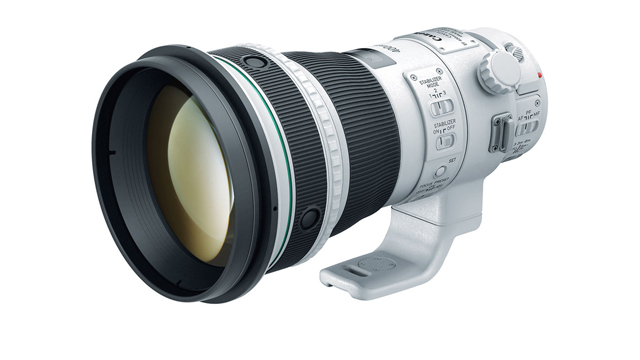
Canon 400mm f/4 IS DO IS II Review: Battle of the light lenses
Introduction and technology:
Back in 2001 when Canon introduced the original EF 400mm f/4 DO IS, it was the first photographic lens with a multi-layer diffractive optical element. This element replaced the conventional convex refractive front element, hence the “DO” designation. A diffractive element features gratings that cause interference in the wave front of the incident light, bending the light in the desired angle. In principal, the effect of a conventional lens can be achieved with a much thinner and lighter diffractive element. In Canon’s original multi-layer design, the diffractive (DO) element is used not only to replace the front element, but also to “reverse” the chromatic aberration characteristics (CA) of a conventional lens. The end result is that the CA can be cancelled by combining just two elements, the DO element and a conventional element. This is shown in the figure below.
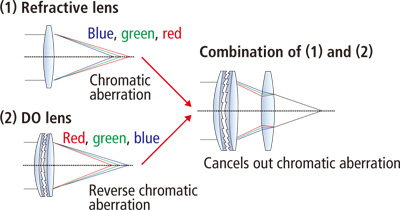
Chromatic aberrations are reversed by using a multi-layer diffractive element. source: Canon USA Inc.
Since the DO element can bend the light to a greater degree, the elements can be placed closer to each other resulting in a shorter lens. However, there is no free lunch, since fabrication, bonding, and alignment of the DO elements are difficult, time consuming and expensive processes.
The original EF 400mm f/4 DO was a great experiment, it delivered on the promise of a light and compact lens. The bare lens was sharp if it lacked in contrast a bit.
While I liked the old DO lens when used bare, it had a major Achilles heel: very poor performance with both EF extender 1.4X and 2X. With the EF extender 1.4X, the RAW files were decidedly soft and the AF was slow and inaccurate. I would go so far as to say the lens wasn’t even usable with the 2X at all. At the same time, it’s fair to say Canon did not design the optical formula with extender usage in mind. As a result, the original EF 400mm F/4 DO was just a stabilized 400mm at the end of the day. At a price point exceeding $5000 during most of its production span, this lens was not a good proposition for bird or wildlife photographers coming out behind the EF 300mm f/2.8 IS (both series I and series II), which deliver sharp files even with a 2X extender.
However, Canon claim to have totally re-engineered this lens with significantly improved optical formula, better materials and improved manufacturing and calibration processes. Especially, the performance with the extenders has significantly improved, Canon claims. The MTF charts published on Canon’s website are so stellar that they are almost unbelievable.
Chuck Westfall, Canon USA’s technical adviser, kindly provided me with some details regarding the new lens’s design. The new EF 400mm f/4 DO IS II features a gapless multi-layer diffractive element. The air gap between the DO elements in the old lens causes refraction of light at the non-homogeneous interface between the gratings and the air, this in turn causes flare and loss of contrast in some shooting conditions. The gapless DO element preserves contrast and reduces flare. The difference between the two designs is shown in the figure below

The DO element with an air gap in the original EF 400 f/4 DO IS (a) and the gapless DO element in the EF 400mm f/4 DO IS II (b)
It is easy to see that Canon have completely changed the optical formula for this lens compared to its predecessor. Unlike the old lens, the DO element is no longer the front element, but the the third element directly behind the UD element, as shown in the figure below. The UD element helps to reduce secondary spectrum aberrations. The new lens features Canon’s latest SWC (subwavelength structure coating) on one of its internal elements to reduce flare even further. Canon have also incorporated a large diameter ground and polished aspherical element. It contributes significantly to the improvement of the overall image quality in the new lens. In fact, this is the first time that Canon have ever used an aspherical element in a supertelephoto lens. In addition to redesigning the optics, Canon have also fitted the new lens with latest in AF hardware and software bringing it in line with the other IS II series supertelephoto lenses.
The new EF 400mm f/4 DO IS II has a high bar to pass. Not only does it have to match the stellar performance of the EF 300mm f/2.8 IS II, but it has to exceed it. The EF 300mm f/2.8 IS II is the current benchmark for short and compact professional telephoto lenses. It has been my favorite light travel lens for a while, delivering tack sharp files at wide open aperture and rapid AF. When attached to the EOS-1D X, the performance of this lens remains stellar in terms of both AF and sharpness even when used with the extender 2X III.
In this review we will find out if the new EF 400mm f/4 DO IS II is able to match this performance, in particular with extenders while shooting birds in flight.
Specifications
400 vs. 300
First, let’s take a look at the specification of the new EF 400mm f/4 DO IS II compared to the EF 300mm f/2.8 IS II. These two lenses are very close in terms of their physical aperture (100mm for 400mm DO IS II and 107mm for EF 300mm f/2.8 IS II), as a result they are almost identical in diameter. They share the same lens hood as well. However, despite having a longer focal length, the EF 400mm DO IS II is actually a bit shorter than the EF 300mm f/2.8 IS II thanks to the incorporation of the DO element. The middle section of the EF 400mm f/4 DO IS II is also slightly narrower than the EF 300mm f/2.8 IS II. The photos below show both lenses side-by-side.
In terms of hand holding, both lenses are very easy to hand hold, however the EF 400mm f/4 DO IS II feels surprisingly more comfortable to hand hold for very long durations. This is because the center of mass is closer to the camera body, especially when the Extender 2X III is attached.
The table below compares the main spec’s between these two lenses. It is fair to compare these lenses at the same focal length for bird photography, especially when hand holding. For each focal length range, I have added the weight and the length of the extender needed to achieve the respective focal length to the bare lens.
As you see, for comparable effective focal lengths, the EF 400mm f/4 DO IS II is both shorter and lighter than the EF 300mm f/2.8 IS II. So at least on paper, the DO lens wins this category. The EF 300mm f/2.8 IS II has an edge in low light given its max. aperture of f/2.8 but at a short focal length of 300mm. This could be handy for some situations such as shooting bald eagles at close range but it could be a bit too short to be useful for other subjects. The EF 400mm f/4 DO IS II on the other hand, can provide up to 800mm of stabilized reach in a very compact package shorter than 12″ and lighter than 5.5 lbs. If the image quality (sharpness) and AF remain stellar at this setting, it is indeed a breakthrough for Canon users. Of course at $6899 the EF 400mm F/4 DO II is not a cheap date. We will now put it into an extensive test to see if it can command such a price.
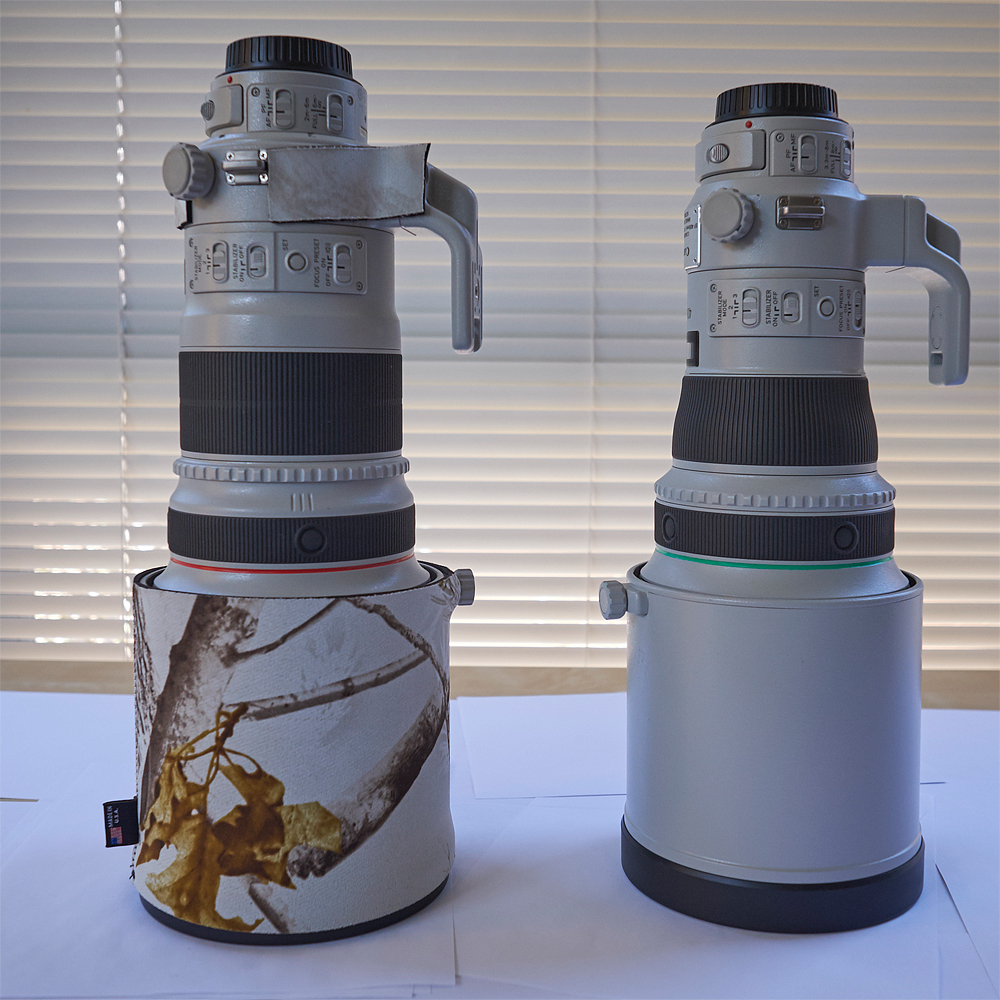
EF 400mm f/4 DO IS II (right) vs. EF 300mm f/2.8 IS II (left). The DO is shorter and narrower than the 300. Both lenses use the same lens hood.
Static tests
For comparison, I used my Dollar bill to split any differences between the two lenses when shooting under controlled conditions. I used a tripod, speedlite 580 EX II and a remote release to eliminate any vibration for this test.
I moved my tripod closer to the bill with the EF 300mm f/2.8 IS II in order to (approximately) equalize the subject size in the frame and concentrate just on absolute sharpness. Obviously, when shooting from the same distance, subject will be larger with the EF 400mm DO IS II. I used the widest aperture available for each combination of the lens plus extender. This is how I use my lenses in the field for avian subjects.
Bare Lens:

Left: EF 400 F/4 IS DO II at f/4. Right: EF 300 f/2.8 IS II at f/2.8. EOS-1D X. RAW converted with Canon DPP 4.3. click on the image to enlarge.
Lens+ Extender 1.4X III:

Left: EF 400 f/4 IS DO II + Extender 1.4X III at f/5.6. Right: EF 300mm f/2.8 IS II + Extender 1.4X III at f/4. EOS-1D X. RAW converted with Canon DPP 4.3. Click on the image to enlarge.
Lens+ Extender 2X III:

100% crop from RAW. Left: EF 400 F/4 IS DO II + Extender 2X III at f/8. Right: EF 300 f/2.8 IS II + Extender 2X III at f/5.6. EOS-1D X, RAW converted with Canon DPP 4.3. Click on the image to enlarge.
As you see, there is no visual difference in contrast or sharpness between the outputs from these two lenses attached to the EOS-1D X with or without an extender. I did not use any chromatic aberration or other lens correction during RAW conversion, it is straight out of the camera. I think it is safe to say that the simulated MTF charts on Canon website are pretty accurate. The EF 400mm f/4 DO IS II is razor sharp even with the Extender 2X III at its widest aperture setting (f/8), it is in a whole different league compared to its predecessor.
In order to demonstrate the difference in maximum achievable focal length between the two lenses I shot the Dollar bill from the same distance with the extender 2X III attached, this will give a focal length of 600mm with the EF 300mm f/2.8 IS II and 800mm with the EF 400mm f/4 DO IS II.

100% Crop from RAW. Comparison between maximum focal lenght. left: EF 400 DO IS II + Extender 2X III at f/8. Right EF 300mm f/2.8 IS II + Extender 2X III at f/5.6. EOS-1D X. RAW converted with Canon DPP 4.3. Click on the image to enlarge.
At 800mm the subject is about 78% larger in the frame compared to 600mm. This is a significant difference in terms of reach. Of course, this combination is a full stop slower than the EF 300mm f/2.8 IS II + Extender 2X III which could put it at a disadvantage in very low light situations. However, when needed, you can still get 560mm at f/5.6 by attaching the extender 1.4X III to the EF 400mm f/4 DO IS II. Furthermore, thanks to the EOS-1D X, I can crank up the ISO all the way up to 6400 without much concern about the image quality to keep the shutter speed fast.
AF speed
A sharp lens that is slow to focus is of no use to me as I like to capture birds in flight. Prior to the introduction of the EOS-1D X, Canon electronically slowed down the AF servo drive speed when either 1.4X or 2X extenders were attached to account for the loss of light, that is as 50% with the 1.4X extender and 75% with the 2X extender. The significant reduction in servo drive speed, especially with the extender 2X, limited its application for bird in flight photography. Canon changed this equation with the introduction of the EOS-1D X and series II super-telephoto lenses. When using a series II super-telephoto lens and a series III extender, the EOS-1D X user will not notice a reduction in the servo drive speed with either 1.4X or the 2X extender. (Note that is not true for any other camera or lens combination that I have used). This means that when attached to an EOS-1D X, the EF 400mm f/4 DO IS II plus EF Extender 2X III can potentially be a great combination for shooting birds in flight.
It is very difficult, if not impossible, to devise a test that can represent the true performance of camera/lens combination for tracking birds in flight. There are just too many variables. However, we can measure the servo drive speed for a static subject. To do this, I first attached the EF 300mm f/2.8 IS II to my EOS-1D X on a tripod and measured the time it takes for the lens to drive and lock focus from the minimum focus distance (MFD) to infinity at full range using an iPhone 6 Plus. I repeated this test with the EF 400mm f/4 DO IS II. Extenders 1.4X III and 2X III were subsequently added on. This test was repeated three times for each case and the values averaged. the video clips below compare the EF 300mm f/2.8 IS II + Extender 2X III with the EF 400mm f/4 DO IS II + Extender 2X III.
EF 400m f/4 DO IS II + Extender 2X III.
EF 300mm f/2.8 IS II + Extender 2X III.
The table below compares the servo drive speed for these two combinations.
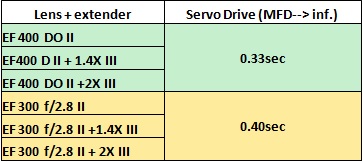
Servo drive speed with EOS-1D X. Lens manually focused to MFD, then AF on a very far subject (inf). The focus time was calculated by counting the number of frames for the duration of AF using iPhone’s slow-motion video at 240 fps and then dividing by the frame rate. Note that the servo drive speed will reduce with camera bodies other than the 1D-X
There is virtually no difference in servo drive speed between these two lens for equal travel of the focus plane (note that the MFD for EF 300mm f/2.8 IS II is 2m compared to 3.3m for EF 400mm f/4 DO IS II thus slightly longer drive time). I did not measure a difference in the servo drive speed with either extender 1.4X III or 2X III. Note that with camera bodies other than the EOS-1D X the servo drive will reduce when an extender is added.
In practice, I always use far focus limit when photographing birds in flight so the servo drive time is even shorter.
This test however, doesn’t tell much about the accuracy and consistency of AI servo tracking when shooting birds in flight, in particular against varied backgrounds, which leads us to the field test.
Field results
So far the new DO lens has performed exceptionally well under controlled conditions, both in terms of optics and servo drive speed. But the real test is always in the field with avian subjects. The first thing that I noticed as soon as I started shooting with the EF 400mm f/4 DO SI II was how light and well-balanced the lens was. Right off the bat, I started shooting with the extender 2X III. On paper, this combo is ~9 ounces lighter than the EF 300mm f/2.8 IS II + extender 2X III which I have extensively used. In practice, it feels a lot lighter and easier to swing because of the shorter length and the fact that the center of the mass is closer to the camera body reducing the lever effect. It is extremely easy to track birds in flight with this lens.
Needless to say the combination of the EF 400mm f/4 DO IS II and extender 2X III performed flawlessly with static subjects delivering tack sharp RAW files with excellent micro-contrast and detail:
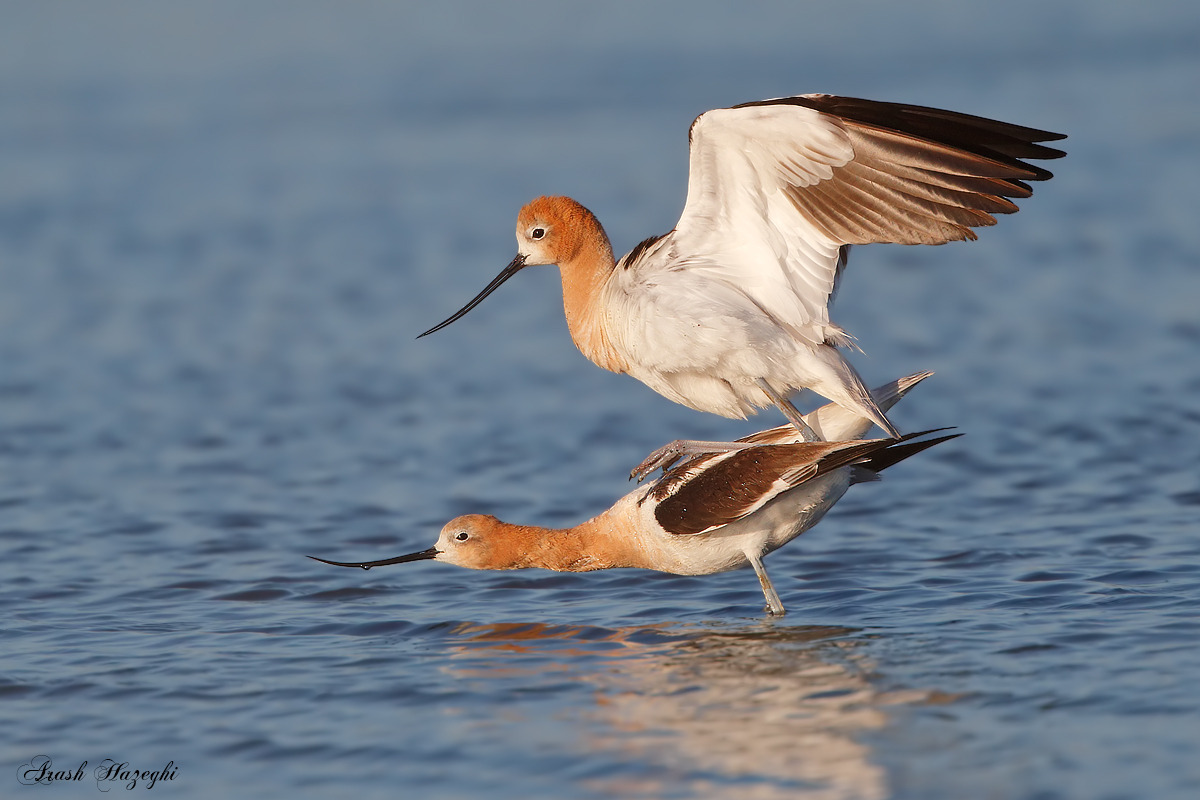
American Avocets mating in breeding plumage. EOS-1D X with EF 400 DO II + Extender 2X III. ISO 1600. f/8 1/3200 sec. Processed with DPP 4.3. Click on the image to enlarge.
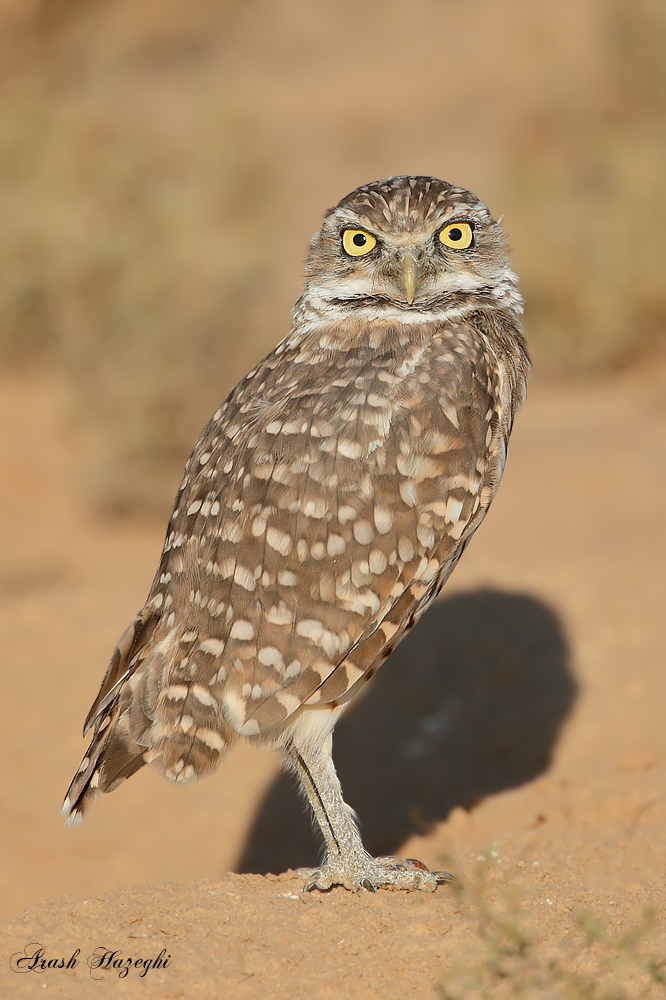
Adult Burrowing Owl. EOS-1D X, EF 500 f/4 DO IS II + Extender 2X III. ISO 1600. f/8 at 1/3200sec. Hand held. Processed with DPP 4.3. Click on the image to enlarge.

Black-necked Stilt. EOS-1D X with EF 400 f/4 DO IS II + Extender 2X III. ISO 1250. f/8 at 1/3200sec. Hand held. Processed with DPP 4.3. Click on the image to enlarge.
The examples above show typical field images from the EF 400mm DO f/4 IS II and extender 2X III. The RAW files are sharp and clean, unlike the old DO lens, there is no loss of contrast or funny-looking specular highlights in the out-of-focus areas.
With the extender 2X III attached, the maximum aperture is reduced to f/8. With the EOS-1D X, only the center AF sensor is available among with the four expansion sensors (although the user cannot individually select the expansion sensors). This means that you have to be more careful with the initial acquisition, quickly placing the bird in a smaller area compared to the case where 8 expansion points are available. At the same time, the lighter weight of the lens helps you in tracking the subject more accurately so this isn’t a big issue. The combination of the EF 400mm f/4 DO IS II + Extender 2X III is capable of some very impressive results when it comes to BIF. I have to admit, starting the field tests, I was a bit skeptical about this combination being able to produce high quality in-flight shots consistently, but after using it for about 2 months in the field, it has earned my respect.
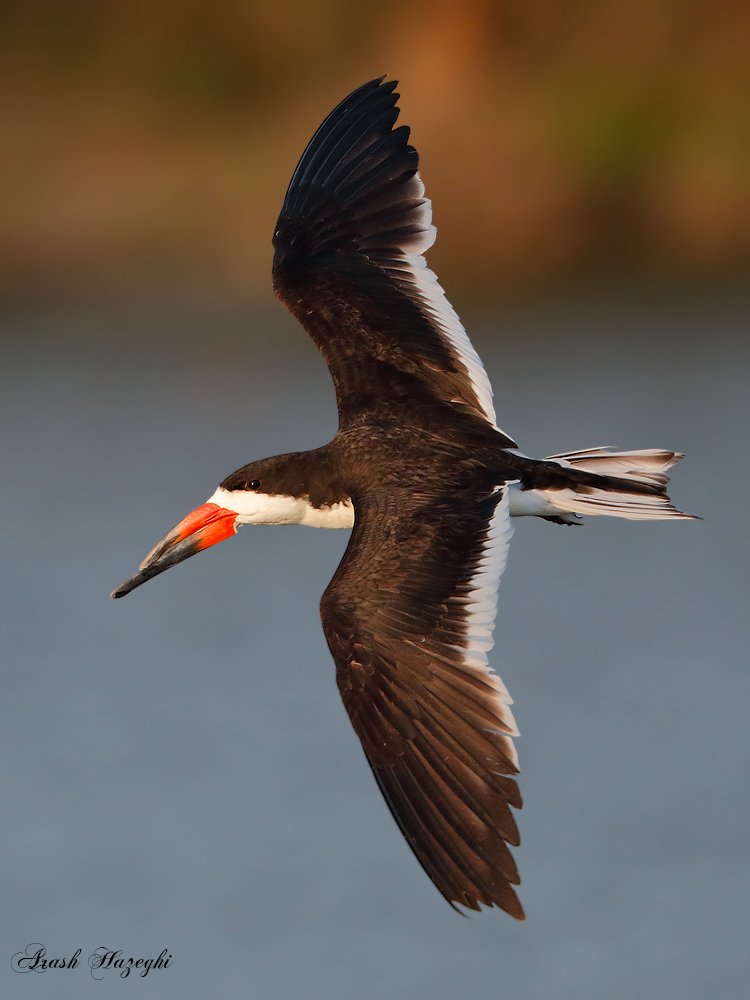
Black skimmer. EOS-1D X EF 400 f/4 DO IS II + Extender 2X III. ISO 3200. f/8 at 1/2500sec. Hand held. Processed with DPP 4.2. Click on the image to enlarge.
I spent a few evenings photographing shorebirds in the San Francisco Bay area. Some shorebirds fly very fast and quite erratically so it is a good workout for the AF.
One advantage of the light EF 400mm f/4 DO IS II compared to the EF 600mm f/4 IS II is that you can hold the lens pointed at the subject in anticipation of action for a very long period of time. Some birds fly very quickly and on relatively short paths, therefore it is often very difficult to lock AF on these birds during flight. One of the techniques for capturing such birds in flight is to find a perched or standing bird, paying attention to its behavior and anticipating when it might fly. Once the lens is pre-focused on the standing bird, or slightly in front of it (for incoming shots) it is much easier to lock AF during takeoff and flight. A good example for this scenario is when birds are nesting or feeding youngsters in presence of scavengers such as gulls and crows. If you see a gull or a crow approaching nesting grounds of an American Avocet action is almost certain. This requires keeping your lens aimed at the bird in anticipation of flight or action. I can hold my EF 600mm f/4 IS II for about a minute or two before needing to lower it for a moment. With the EF 400mm f/4 DO IS II, I can hold the lens steadily aimed at my subject for much longer without feeling fatigue or getting shaky. This is a very big advantage that shouldn’t be overlooked even for skilled hand-held shooters.
Yellowlegs isn’t the easiest species to capture in flight. I had pre-focused on the standing bird in anticipation of flight.
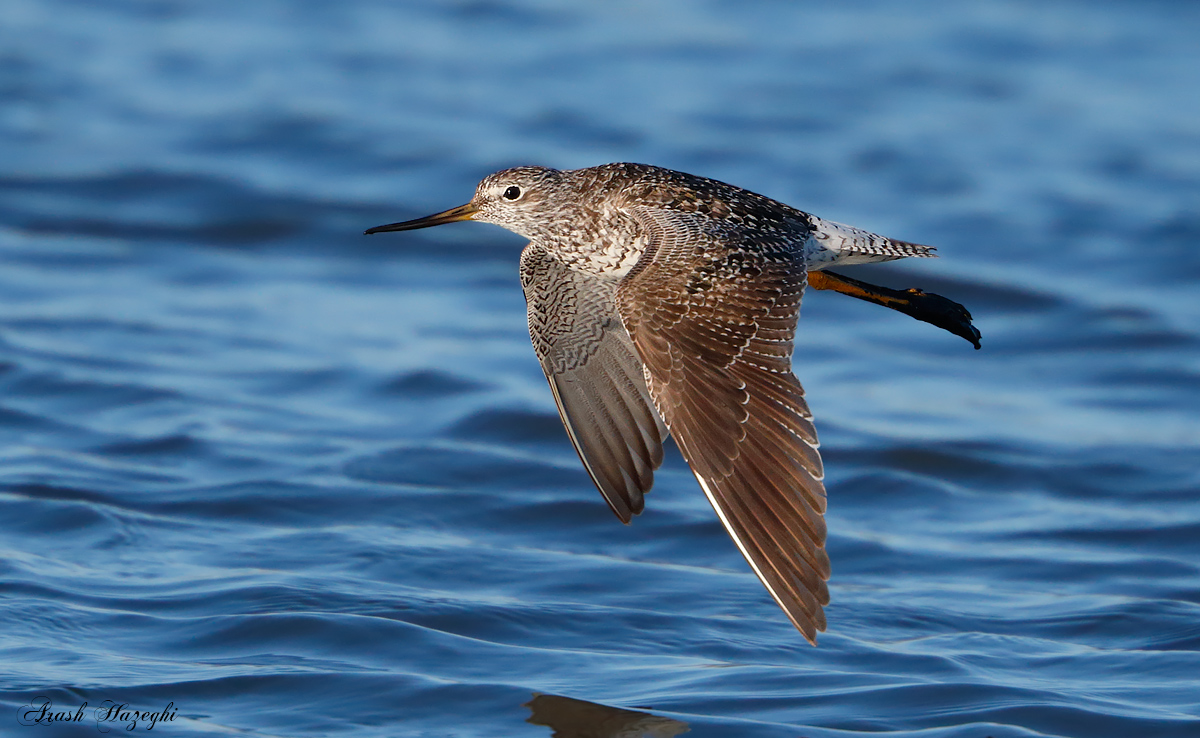
Yellowlegs. EOS-1D X, EF 400 f/4 DO IS II + Extender 2X III. ISO 1600. f/8 at 1/3200sec. Hand held RAW converted with DPP 4.2. Click on the image to enlarge.
Terns were quite active at this location feeding their youngsters with fish while holding their ground against seagulls and skimmers.

Forster’s Tern with fish. EOS-1D X, EF 400 DO f/4 IS II + Extender 2X III. ISO 1250. f/8 at 1/3200sec. Hand held. RAW processed with DPP 4.3. Click on the image to enlarge.
Black-necked stilt is another challenging subject.
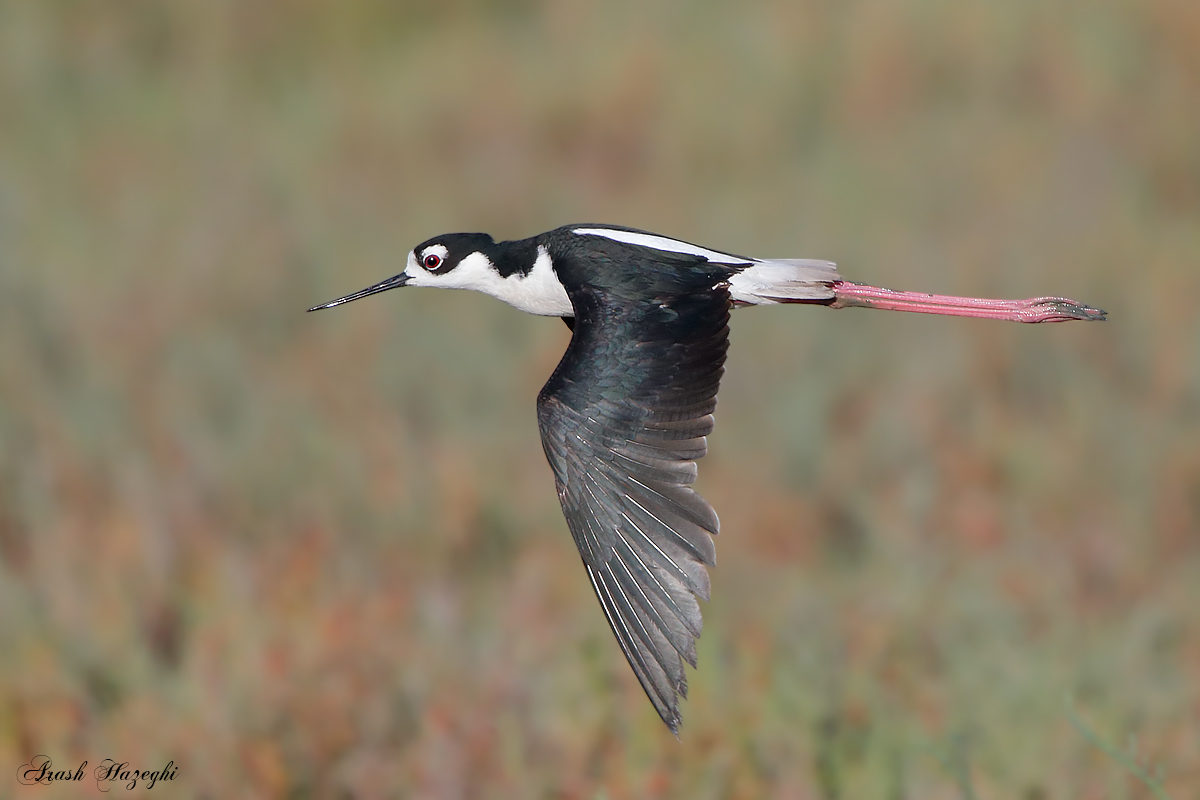
Black-necked Stilt. EOS-1D X , EF 400 f/4 SO IS II. ISO 1250. f/8 at 1/2500sec. Hand held. RAW processed with DPP 4.3. Click on the image to enlarge.
Another classic subject is the American Avocet. I have photographed this bird extensively with many different lenses and camera bodies. Before the introduction of the EOS-1D X and the series II super-telephoto lenses, I totally avoided attempting to capture these birds in flight with a 2X extender.

American Avocet. EOS-1D X and EF 400 DO f/4 IS II + Extender 2X III. ISO 1600. f/8 at 1/2000sec. Hand held. RAW Processed with DPP 4.3. Click on the image to enlarge.
One more advantage of the light-weight EF 400mm f/4 DO IS II is when tracking action with more then one bird in the frame. It is easier to keep two or more birds in the frame when action commences at high speed because swinging the lens is very easy compared to the heavier EF 600mm f/4 IS II that is my standard birding lens.
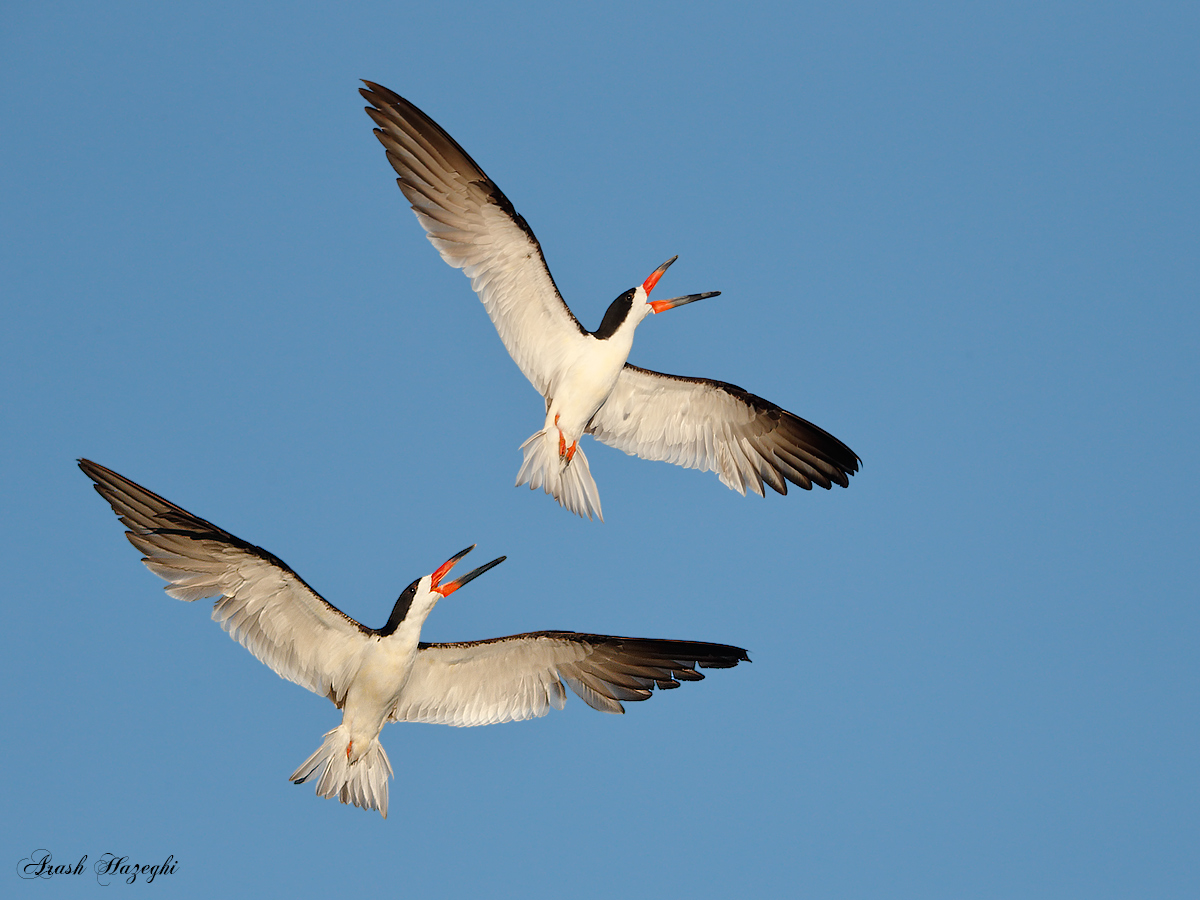
Black skimmers chasing. EOS-1D X, EF 400mm f/4 DO IS II + Extender 2X III. ISO 1600. f/8 at 1/3200sec. Hand held. RAW processed with DPP 4.3. Click on the image to enlarge.
This is another example, Forster’s tern was chasing off the seagull from her nest.
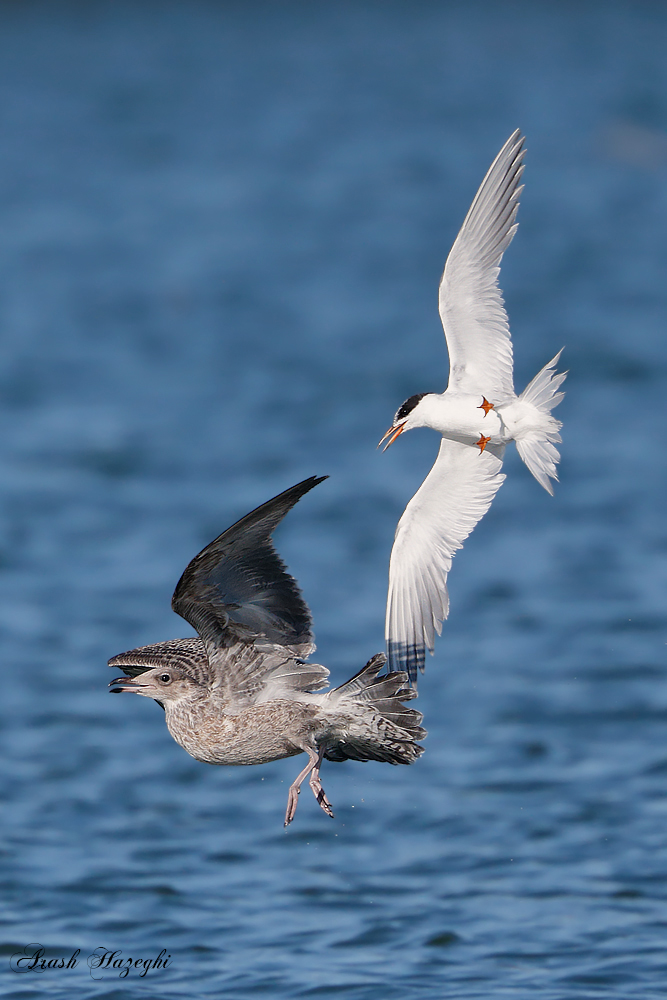
Forster’s Tern chases a seagull. EOS-1D X, EF 400 DO f/4 IS II + Extender 2X III. ISO 1250. f/8 at 1/3200sec. Hand Held. RAW processed with DPP 4.3. Click on the image to enlarge.
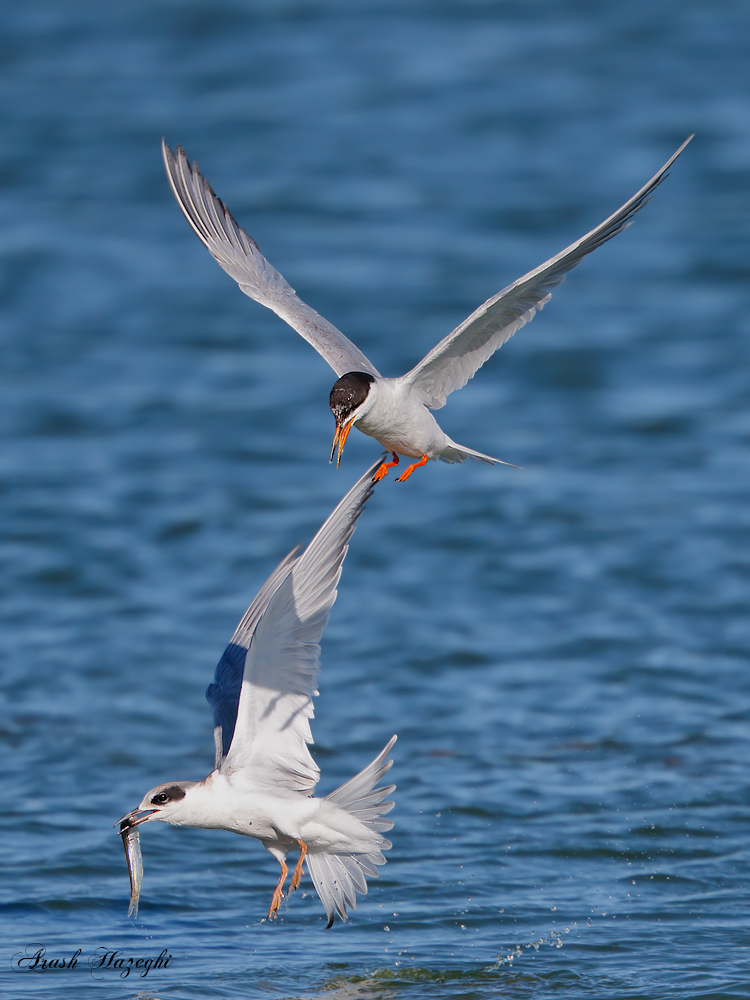
Juvenile Forster’s Tern takes off with a fresh snack as mom watches from above. EOS-1D X, EF 400 DO f/4 IS II + Extender 2X III. ISO 1250. f/8 at 1/3200sec. Hand held. RAW processed with DPP 4.3. Click on the image to enlarge.
Another challenging scenario for the AF is bird flying towards the camera at speed. The combination of the EF 400mm f/4 DO IS II performed well for this category as well.
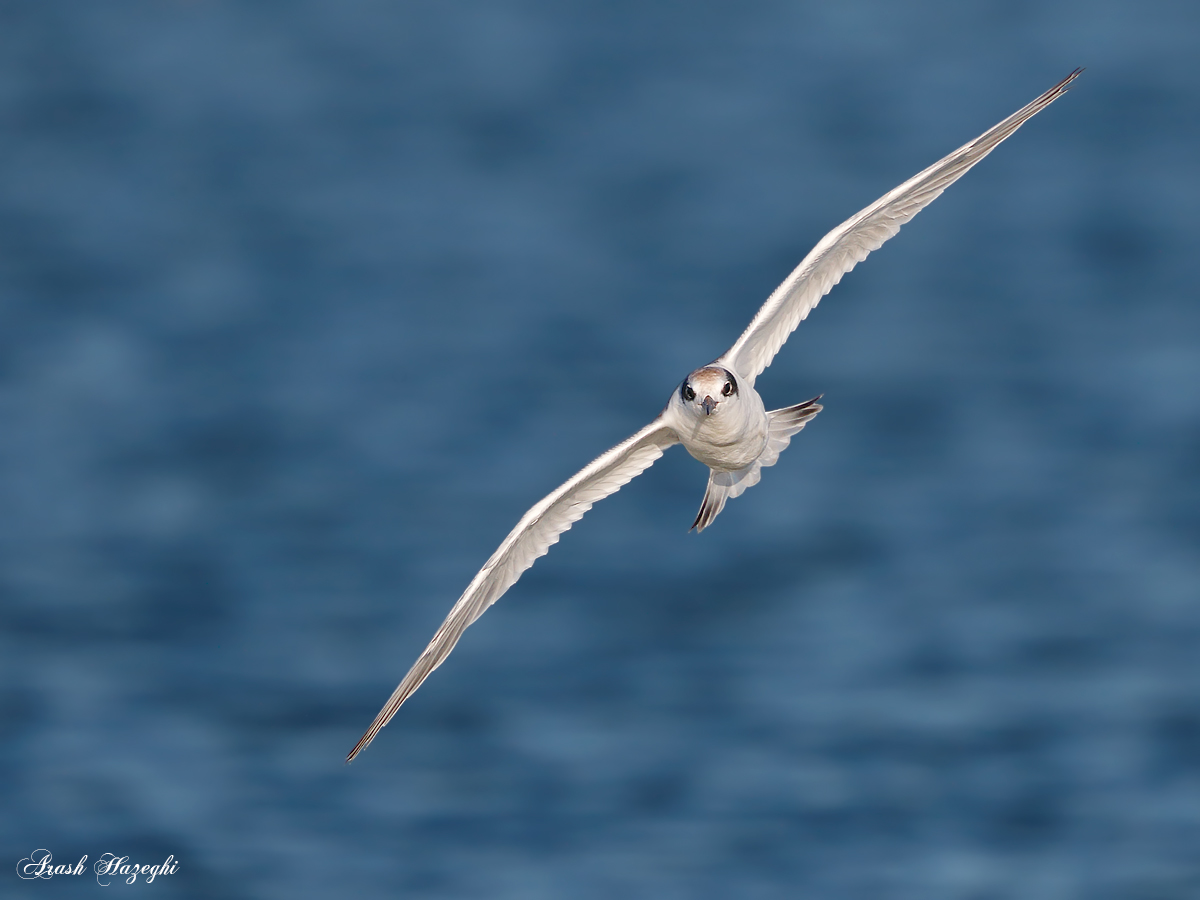
Incoming Tern (Juvenile). EOS-1D X, EF 400mm f/4 DO IS II + Extender 2X III. ISO 1250. f/8 at 1/3200sec. Hand held. RAW processed with DPP 4.3. Click on the image to enlarge.

In-coming American Avocet. EOS-1D X, EF 400mm f/4 DO IS II + Extender 2X III. ISO 1600. f/8 at 1/2000sec. Hand Held. Processed with DPP 4.3. Click on the image to enlarge.
For flight shots, I always set the lens focus range to far-focus for faster AF drive (shorter focus travel). When it comes to the minimum focus distance (MFD) at comparable effective focal lengths, the EF 400mm f/4 DO IS II has an advantage over the EF 600mm f/4 IS II. The far-focus MFD of the 400mm is 8m compared to 16m for the 600mm.
This is a perfect scouting lens as well, when you don’t want to commit to bringing a large super-telephoto lense to the field.
Overall, after shooting with this lens for almost two months my impression is very positive. The lens is certainly usable for flight shots with the EF extender 2X III attached to an EOS-1D X. Needless to say, as expected, the lens is extremely sharp and focuses rapidly when used bare or with the extender 1.4X III.
Incidentally, the combination of the EF 400mm f/4 DO IS II and the extender 2X III has approximately the same focal length as the EF 600mm f/4 IS II plus extender 1.4X III. It’s tempting to compare these two combos. Of course, the latter is a full stop brighter at f/5.6 (and weighs twice as much). Furthermore, it can take advantage of the the full array of the AF sensors at f/5.6. While both combos focus very quickly, when shooting challenging BIF against varied backgrounds, the EF 400mm f/4 DO IS II + Extender 2X III doesn’t deliver quite the same level of performance seen from the EF 600mm f/4 IS II + Extender 1.4X III. Some of this is due to the smaller AF expansion (4 points vs. 8 points) and some is because the AF sensor has less light to work with. The initial acquisition against a varied background when the lens is extremely de-focused is also a bit more difficult, again due to the smaller expansion area. The gap between this combination and the EF 600mm f/4 IS II + extender 1.4X III widens as the light levels drop. So while the EF 600mm f/4 IS II remains the overall king of birding lenses, the EF 400mm F/4 DO IS II opens a new chapter in compact super-telephoto lenses.
The EF 400mm f/4 DO IS II carries an equally impressive MSRP of $6899 at the time of writing this review. However, given its low production volume, the materials and technologies used to produce the lens, and its diffractive elements the price doesn’t seem out of the ordinary. Currently, this lens has no competition on the market.
Just a few years ago, I could not imagine a way to get 800mm’s of stabilized reach, with tack sharp optics and AF that is worthy for flight, out of a small backpack. The EF 400mm f/4 DO IS II is a game changer lens, at least for me. There are many locations where it’s just not possible to use a 600mm IS II prime lens. I used to take my EF 300mm f/2.8 IS II for such trips and sometimes I wished I had more reach. Well, the EF 400mm f/4 DO IS II now solves that problem. This lens is also ideal for shooting from a vehicle where there is limited space to maneuver. The winner of the head-to-head with the EF 300mm f/2.8 IS II is thus the new EF 400mm f/4 DO IS II for general bird photography. Therefore, highly recommended!
Pros
★ The lightest super-telephoto lenses on the market delivering up to 800mm of stabilized reach with fast AF (pro bodies).
★ Sharp with both EF extender 1.4X III and 2x III with no visible loss in crispness or contrast unlike its predecessor.
★ compact size, it fits in a small backpack. Easy transportation, carry-on compatible with small regional jets.
★ Rapid AF even when attached to the Extender 2X III (EOS-1D X only)
★ Far-focus MFD of 8m at 800mm.
Cons
☆ Price.
The images in this review were processed using Canon DPP 4 software, the details of processing is explained in the DPP4 guide co-authored by Arash Hazeghi and Arthur Morris. The techniques used for capturing birds in flight are explained in the EOS AF guide. Both guides are available here
Acknowledgements:
Thanks to Chuck Wesftfall, Canon USA technical adviser, for technical discussion and reference material.
Please note, I have no financial relations with Canon, nor do they pay or provide any equipment for my reviews. I purchase and review my gear independently.


Great review and superb photos. The new Canon 400mm f/4 IS DO IS II did a great job in the right hands. Thank you for sharing your experience and all details. From my point of view one more Cons would be 3.5m MFD vs 2m for EF300 II. I mean for telemacro shots, small birds, lizards etc. Regards, Miroslav
Hi Miro,
Remember that the EF 400mm DO II can reach 800mm (EF 300mm II maxes out at 600mm), and the MFD doesn’t change when an extender is added so the magnification is only slightly lower despite the longer MFD.
Great review. I have had one on order for several months. How did you get your hands on me?
Geoff
Hi Geoff, it took me a while to get one from B&H photo.
Arash,
This is a review I have been waiting for ever since I saw those first avocet images . Thanks for doing all the work and the sharing it with us. I hope Canon realise what a benefit it will be to them.
One question — You said to me in an earlier missive that the 400DO would not be appropriate for one of your images [as I’m not at home with my photo computer I can’t remember which one] .what was the issue?
And one further DO plus point . In high wind HH the 600 can be a bit of a problem and the shorter lens a great advantage.
Again many thanks for the clear and informative review
Hi Ian,
I am not sure which image you are referring to but it might have been a specific subject that requires a specialized lens.
best
In answer to Geoff’s question, I found one at Adorama about 4 weeks ago and purchased it. I also got a call from Allen’s Camera a few weeks ago saying they had one. I had been “googling” Canon 400 DO II every few days before finding mine. Amazon had at least one on two different occasions. Keep looking everywhere is my advice.
Ive got one…it is great…..for an 80 year old guy, this is the perfect bird lens, and it makes it easy to pack for an airplane trip…I had the old one, and this #2 is so much better….in combo with the vs III of the 1.4 and the 2.ox it is great….taking it to Alaska at the end of Oct…looking forward to getting lots of eagle shots
Thank you so much for this review. I have been considering this lens and your review is very helpful to me. Are you able to share where in the SF Bay Area you encountered all these beautiful shore birds? Paul
Hi Paul, it was in Redwood shores near San Mateo bridge, but the birds have since left the area as the nesting season is over.
Excellent review. I will be selling my 300 and buying the new 400 ;-0
Ari, Thanks for posting your thorough review!
Am I correct in assuming how AF speed would be affected when DO400II is used with 1.4 extender on 7d2? 50% longer to focus?
yes the AF will be slower with the 7D2, I am not sure if it is 50% or less bur slower.
Hi Ari!
Would you have any idea how this lens would perform with the 7D II with its 1.6 crop factor? I asked Arthur Morris the same question many moons ago when I first heard of the new 400 DO II lens and the upgrade of the 7D.
Great review! Many thanks!
Regards! Neil
Hi Neil, thanks. I don’t use the 7D2 much.
An incredibly thorough and informative review. I owned the original 400 DO. It performed reasonably well and I liked the weight for hand-held shooting. However, there was a major problem with the lens in that it ended to separate in the middle of the lend. Unfortunately, I have sold the lens and cannot give you a more precise location of the separation point. Eventually, the separation would reach about 1/8 inch and the lens would not function. Is it safe to assume that this issue has been fixed with the new lens? Many thanks, Bill Fraser
Hi Bill,
That’s the first time I hear about this issue with the original lens. I am not sure if it is a common problem.
Great review, thanks. Would it be possible to add a few 100% crops of the bird photos, like e.g. the owl eyes?
Hi Ari,
Great post on the 400mm F/4 DO IS II.
I shoot with a 1DM4 coupled with the Canon 600m, f/4 IS I and most often with a 1.4x extender (effective focal length of 840mm). With this combination I find f/8 the most effective aperture.
As this 600mm is pretty heavy and also ‘older’ technology, would you consider the 400mm f/4 DO IS II with a 2x extender a combination worth seriously considering, to replace my aging 600mm?
I did note that in this post you say that the 600mm f/4 IS II is the ultimate bird photographers lens – but this too is newer technology (glass and weight) than the previous generation.
Regards
Mike
Hi Mike,
The 400 DO II + 2X III is an excellent combination, but the AF of this combo may be limiting on the older camera bodies such as the 1D MK IV. I recommend to pair it with 1D-X.
Ari, just got a 400 DO II. It is winter here and the level of light is quite low due to the heavy cloud cover. In the process of microfocusing with the 2X TC II, this 400 seems to struggle and is most difficult to get any decent focus on birds. Some shots are okay, others are VERY SOFT. The 300 f/2.8 II on the other hand, responds quickly with very highly resolved photos.
Could it be that the new 400 DO might not be a good low light lens? Do you have any suggestions? Canon checked the lens today and it is within specs. Thanks in advance, Bill Reichert nr the Windy City
Hi Bill,
It sounds to me as an operator error. The lens is defiantly most capable in low light capturing tack sharp flight frames. It is unlikely that your lens defective or it needs micro-adjustment. I suspect it is your technique. I recommend taking a few workshops to familiarize yourself with flight photography techniques and craft. You can also purchase my flight photography guide that covers the basics of flight photography
regards
Ari, in the above email, please read “2X TC III”. Sorry for the error. Bill
Ari, thanks so much for your reply.
Canon was not able to resolve the issue saying, “it appears as if there is a slight film over the entire photo. If you are not happy with it, return it”. They, themselves had micro adjusted it and bench tested it. A replacement is on its way.
I will let you know what transpires.
Bill
Hi Ari
Have purchased a 400 DO2 and been using it with a 7D2 and 1 DX with and without extenders. I have still to do specific tests but strangely it seems the I am loosing more than one stop when adding the 1.4 and about 3 stops with the 2x which seems very odd. Can this be correct? Is it something to do with the DO technology? Has anyone else noticed this. All testing has been in pretty dull light in the British winter.
Hi Graham,
That’s not the case.
How are you measuring light loss? When you add a TC the field of view becomes much narrower so unless you are pointing your lens at a uniformly lit subject the exposure will vary.
It was a reed bed so pretty uniform background but will do some moe accurate checking.
In bright light this morning produced the expected results off grass: will test again in low light.
Hi Ari
Great review
Have you had chance to evaluate the 5Dsr with this lens ?
it is a lens im very interested in getting as I have the above camera and see it as a light weight set up
Yes, I have used it with 5DsR as well. The sharpness remains great but as expected the AF is quite slow when you add an Extender 2X III.
Thanks ,I would only use the 2XIII now and then so not a problem I will order one as it seems such a nice lens and I like the weight saving too.
Rob.
[…] has nearly been a year since I published my review of the EF 400mm DO IS II, since then I have had many opportunities to use this lens in the field under different […]
[…] the camera at my regular locations where I had shot with other cameras before. I first tried my EF 400mm f/4 DO IS II with 2X Extender III. This combination had proven quite capable with the EOS-1D X, but it was a bit […]
Hi Ari: Wonderful review of 400 DO II, how would your describe AF with 7D2, with and w/o 1.4 extender? Do you shoot this lens wide open most of the time? How would you set up the menu for “lens drive when AF not possible” for 7D2 and this lens?
Finally, will 5D MkIII Af behave like iDX in terms of AF drive speed with 400 Do MkII ?
Hi Paul,
I am not sure what you mean by “how I describe the AF” ?
As for this and any other lens, yes I shoot wide open most of the time.
Set lens drive when AF no possible to ON
and no the 5DIII does not work like the 1DX, its AF is slower, not just with the 400 DO II but with any lens, as expected.
İ ll glad if you post af speed test with 5dMarkIV and extenders also ; thanks
Ari I am still using the 1DMKIV and I have the 100-400v2 and the results for BIF are good when there infocus. I am handholding and using backbutton AF as suggested by many using AI Servo. The strange part is when shooting a burst some are infocus and some are not.
I was thinking of upgrading to either the 3002.8IS or maybe a used 400DO IS II, If I can find one. What are my best options ?
Hi Bruce, the AF system in the 1D4 itself is dated compared to the new bodies, it is not going to be able to take advantage of the new AF technology in the EF 400mm f/4 DO IS II (or any of the series II super-telephoto lenses) unfortunately. I doubt if it will increase your AI-servo keeper ratio (assuming your technique is already perfect). The faster lens will sure help when shooting in lower light though.
best
Hi Ari,
Wondering if you know which lens group the image stabilization element resides.
Best
Hi Ari,
I’m considering selling my Canon 300mm f2.8 Mark II for the 400mm DO Mark II, specifically for use with my 1DX Mark II for the extra reach for birding. I will keep the 500mm Mark II. It seems that the 300mm is now an odd focal length when the 400mm is so sharp. Does it make sense for birding?
Hi Mike, I sold my own 300 II a week after I acquired the 400 DO II.
Hi Ari, I appreciate your perspective and your images certainly demonstrate what the 400mm DO IS II can do in capable hands but is it really superior to the 300mm f/2.8 apart from the longer focal length? Did I misread the apertures on the “dollar bill comparison” or were they different? Can you post some 300mm + 2x bird photos as well? How was the weight/mobility target acquisition difference between the two (300 and 400)? I currently have the 300 and enjoy the utility alone and with both 1.4 and 2x iii tc’s with no real difference in IQ between the two TC’s (obviously their is some loss as compared to the native lens).
Hi Adam,
The 300mm f/2.8 is too short and limiting, not ideal for general bird photography at most locations. I had one because there was no other light-weight/compact telephoto lens at the time, but it rarely saw any usage in my hands whereas I use my 400DO II very frequently. It gives my up to 800mm of reach. If your subject is mostly birds, 400 is your lens without a doubt IMO.
The comparisons are correct BTW, for bird photography we often use our lenses wide open at the longest possible focal length.
I use my Canon 5Dsr with my Canon 400 II DO f4 and the Canon 2x III extender and I find the focus to be very fast with very sharp detail.
Hello Ari,
Now that I am using both Canons and Nikons I’m trying to find something comparable to the 400 Duo in the Nikon world. It appears not to exist and as much as I try to drift from Canon to Nikon, so as to take advantage of the tracking and focusing advantages, it appears that there are no Nikon lenses which are light enough, and small enough, to carry any distance over difficult terrain to enjoy the best photographic opportunities. After all no matter how good the system you still have to take it to the birds if the birds will not come to you.
You already made a great case for this lens and because you did I’m about to buy it. I think everyone would appreciate your thoughts on what might be an alternative until, and if ever, Nikon provides a similar product. As always, your experience and intellect carry a lot of weight.
Thank you.
Hi, currently the only Nikon light lens is the 200-500. Although, this lens is not comparable to the 400 DO II in terms of optics, built quality, AF speed etc. AND price ($1300 vs. $7000) I have had some good results with it, especially with the D850 that makes up for the lack of focal length. However the 400DO II was a secondary lens for me, if you are serious about bird photography your primary lens is going to be 600mm f/4, no way around that.
I have the 200-500. I use in on the D500 and am awaiting the D850. It is amazing how common this combo has become.
You aided my choice. I have the Canon 500 f4 second version and am going to get the same Nikon equivalent, as well as the 400 DO. If the later was a secondary lens for the Canon IDX II and 5D Mark IV it can do secondary service for the Nikon D850 or D5 with a 500 f4 attached when weight and size trump focal length. I toyed with getting the 600 f4, especially since the weight has been considerably reduced from the earlier version. Maybe I will with Nikon but this is not a lens to trek along with a gimbal head and tripod. The D850 seems to be a very good choice but reports are that it is lacking when it comes to fps and focus-tracking simultaneously as opposed to the D500 and D5. The D5 and the 200-500 may be an equivalent competitor when paired against the 1DX II paired with the 400 DO. Either should be manageable with the ergonomics going with the latter and the BIF keepers going with the former and it looks like I’m going to be the first one to make that comparison. The Canon might also be quite sharper because a low-cost zoom slower lens is distinctly at a disadvantage when pitted against a fast, expensive, high-end, prime alternative.
Thanks for your opinion.
Ari,
Have you noticed that Nikon is planning on introducing a prime 600 f 5.6 lens? It is amazing how much weight can be parred off a lens by reducing it by one f-stop. This lens might become a formidable alternative to the Canon 400 DO when you factor in the ability and advantage of Nikon sensors to deal with noise under low light conditions.
No, I don’t follow or comment on internet rumors and speculations.
Good point!
Hello. I enjoy your work and reading your blogs, etc. I decided to get the 400 DO II. I wished they had offered a 500 DO but that is how it goes. The 500 f4 was my dream lens for many years but I just got a a bit too old waiting for it (weight) and ⅓ more expensive. Better for travel as well.
So what I’m finding with a 2X III on both my 7D2 and 5D4. Crazy sharp for a 2X so very happy there.
AI Servo and the 2X delay. I find even at distance a static subject with decent contrast the initial AF is pretty quick. Very acceptable in my books. Even moving the AF point back and forth from one subject to another yields quick refocusing. Both Case 2 with TS at -2 and Case 3 with TS at +2 do their jobs as expected.
BIF. As stated it is a challenge which I don’t mind. It is tough enough to find the bird at 800mm but when do it just won’t focus. The delay is far too long. I always have to pump the BBF as it won’t focus fast enough when the AF point falls on it. Since we have no fine tuning control over contrast I don’t see any other approach. I’ve adjusted to pumping the BBF pretty quickly and am getting decent shots but my keeper rate is down, which I expected. I always come home with something which is all I want. I have tried it on planes as well that have lots of colour and contrast. Same thing.
I attribute part of the lower keep rate simply because even with the IS on at 800mm you can see the slightest movement. You have to be very steady.
My question is even if I’m steady through a burst how is it tracking? I’m basing that on how long it takes to AF and my having to pump to achieve initial AF. Is the 75% delay only during initial AF acquisition or is tracking effected by that as well? You may have mentioned that in your blog and I missed it.
I have not tried the pre-focus option yet but I’m not sure how much it will help. Any other suggestions would be helpful.
Thanks in advance.
Hi Zenon,
The combination of the 400DO II and 2X III is going o struggle mightily for BIF with the 7DII and 5D4 bodies. This combination is only useful for BIF if you have a 1DX MKII or a 1DX body
best
[…] due to its resemblance to the original Fresnel lens of the 18th century. Very much like the Canon’s DO element, Nikon relies on microscopic gratings fabricated in the PF element. The gratings diffract the […]
Hey Ari,
I’m after a travel birding lens and I need to save on weight and size due to flights. How do you think the new 400 2.8 iii compares to the 400 do ii?
I have a 1dx mkii so camera body is no issue.
Cheers 🙂
Hi Em, the 400 f/2.8 is not a great lens for bird photography, it is too short for its size and weight. you will have much better results with the 500 f/4 (I’d wait for 500 f/4 III) for the same size/weight. The 400 DO II is great as a light weight travel lens, it does have some limitations as I mentioned in the review.
hope thisnhelps
[…] As a result the lens tips the scale at 4.65 lbs the same weight as the Canon’s now aging EF 400mm f/4 IS DO II. Use of such materials would have saved a pound or more but would have likely doubled the […]